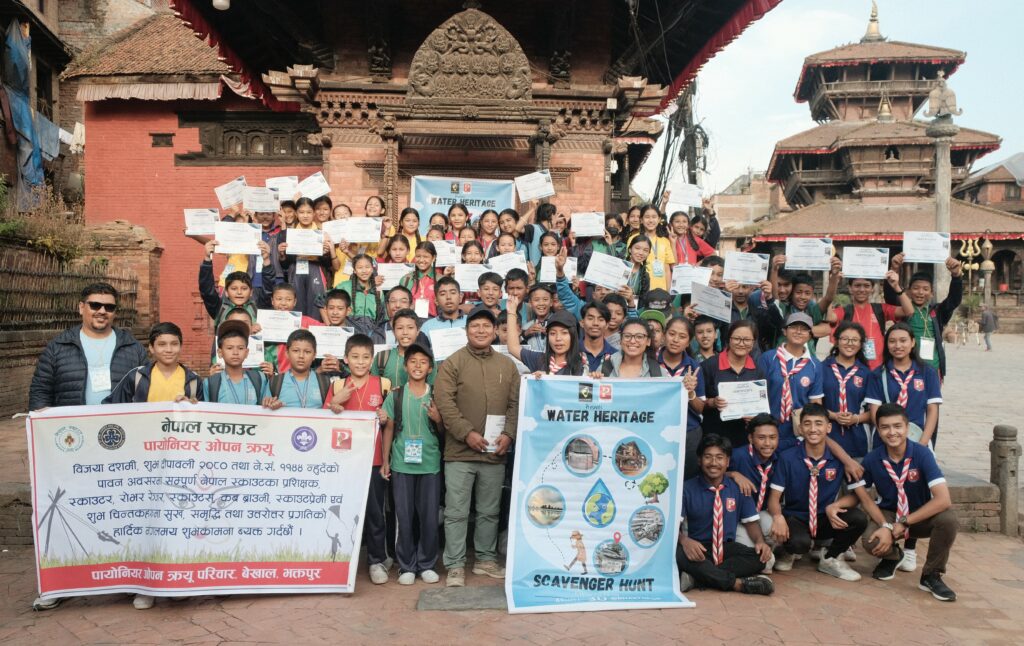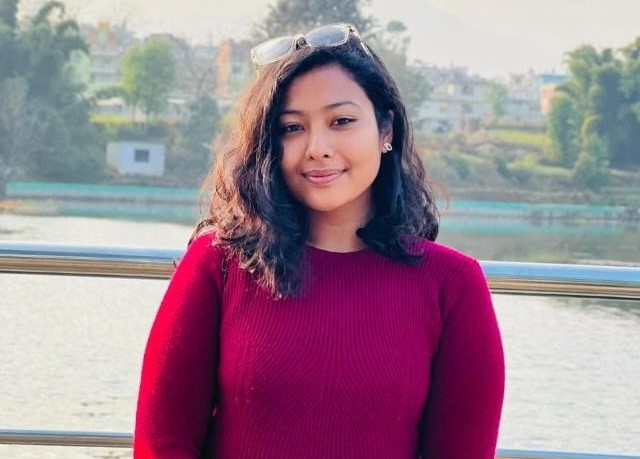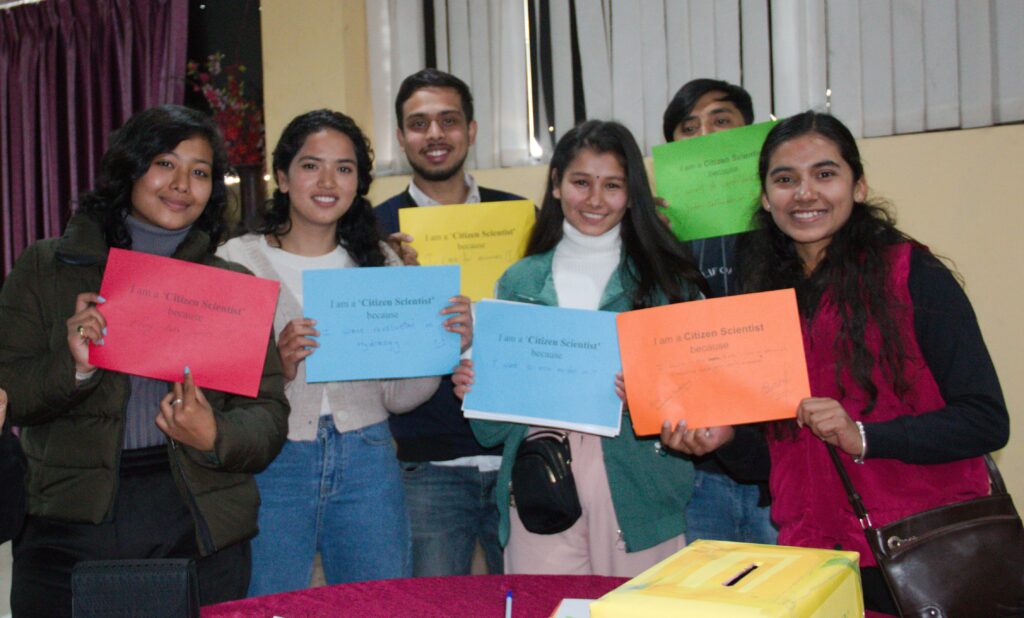Water Heritage Scavenger Hunt – Know Your City
By Sudeep Duwal and Rohinee Bishwas Mandal
Smartphones For Water Nepal (S4W-Nepal), in collaboration with Walk to Connect and Nepal Scout Pioneer Open Crew, successfully organized the Water Heritage Scavenger Hunt event in Bhaktapur on October 17, 2023. The primary objective of the campaign was to unveil the various facets (historical, socio-cultural, and architectural) of the traditional Hiti system of the ancient city of Bhaktapur. The Hiti system, a traditional water management system in the Kathmandu Valley, Nepal, comprises several components: raajkulo: the canals, pukhu: the ponds, hiti: the spouts, tunchhi: the groundwater wells, athal: filtration chamber, Jahru: water storage tanks, and dhown: the drains. The event was intricately designed to explore and gather information about traditional water resources through hiking with the students, scouts, young researchers, cultural activists, and experts in the alleys of Bhaktapur. Furthermore, the event focused on introducing school students and youths to the traditional hiti system through interactive challenges, expert consultation, and a community-based questionnaire survey.
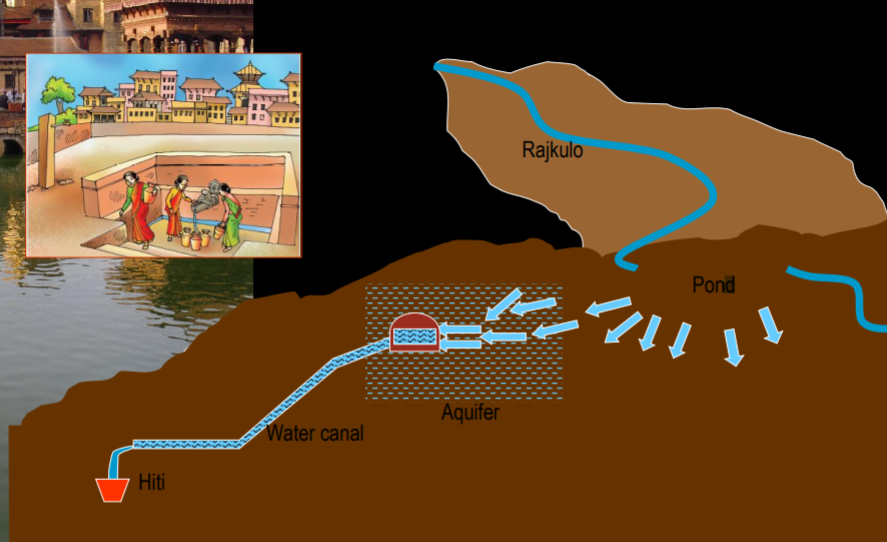
The exploration of water heritage commenced at, Siddhapokhari (Ta: pukhu), the largest pukhu in Bhaktapur located on the western side, and concluded at the Bhisindhyo hiti in Dattatreya Square on the eastern side of Bhaktapur. Sixty-three students from various schools who actively participated in the event were divided into ten groups. The participants had to navigate their designated routes, uncovering the water heritage by following marked directions along the way. They gathered information about the water heritage through a questionnaire survey, engaging with local residents and tackling tricky puzzles during their journey. At culturally significant water heritage sites, resource persons shared profound insight into the remarkable history, interesting stories, experiences, management practices, and current status of the water heritage of Bhaktapur.
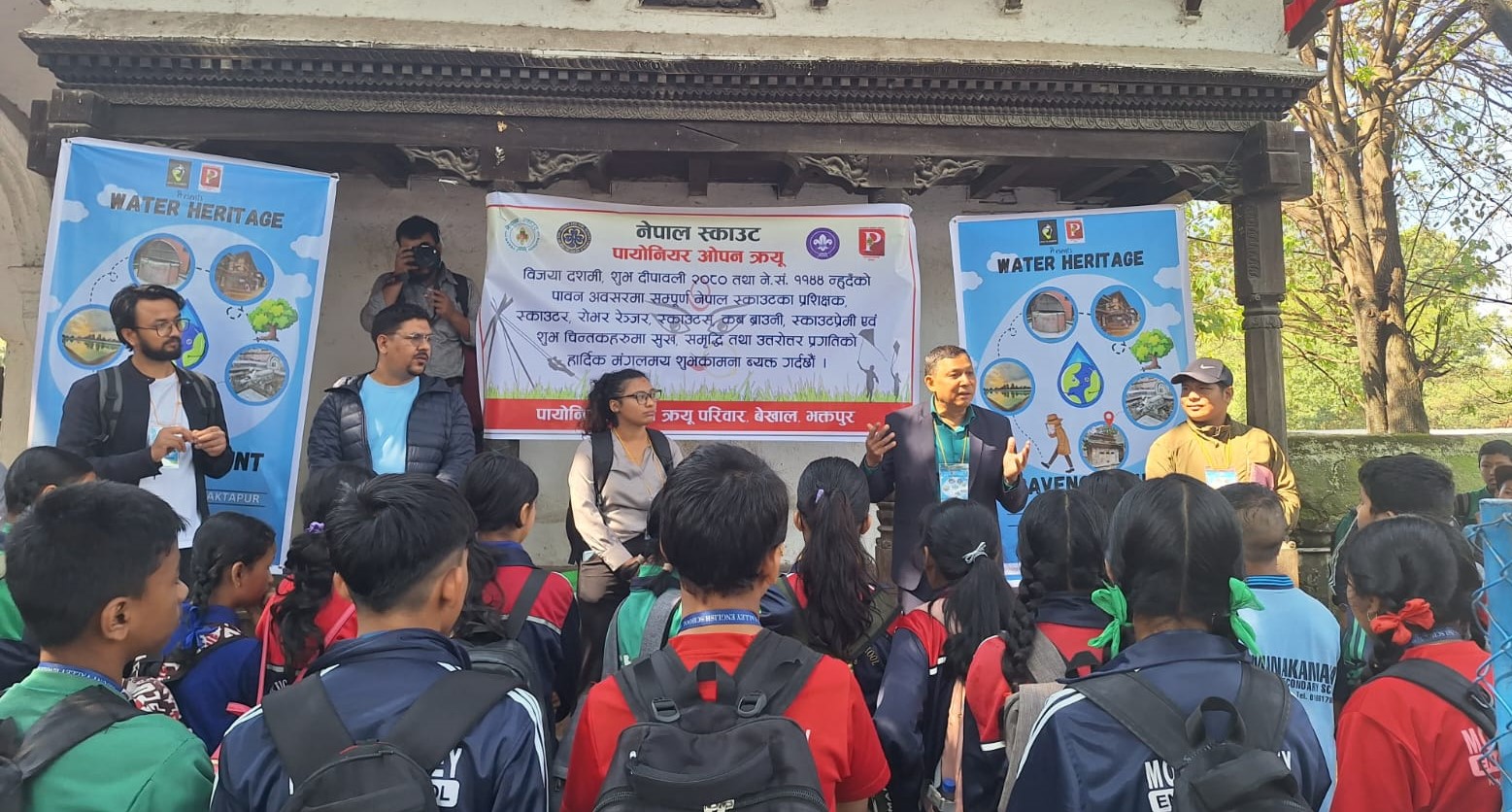
A total of 23 hitis, 11 pukhus, 8 jahrus, and more than 15 tunchhis were explored during the water heritage hunt. The participants witnessed the marvelous architecture, religious and cultural aspects, and aesthetic beauty of traditional water heritage. Each site depicted a glimpse of the history and intricate traditional water management system of Bhaktapur. However, it was noted that many of these water heritages were in a vulnerable state with damaged and eroded structures, dried hitis and pukhus, stolen idols, etc., emphasizing the need for diligent attention toward their renovation, revitalization, and preservation.
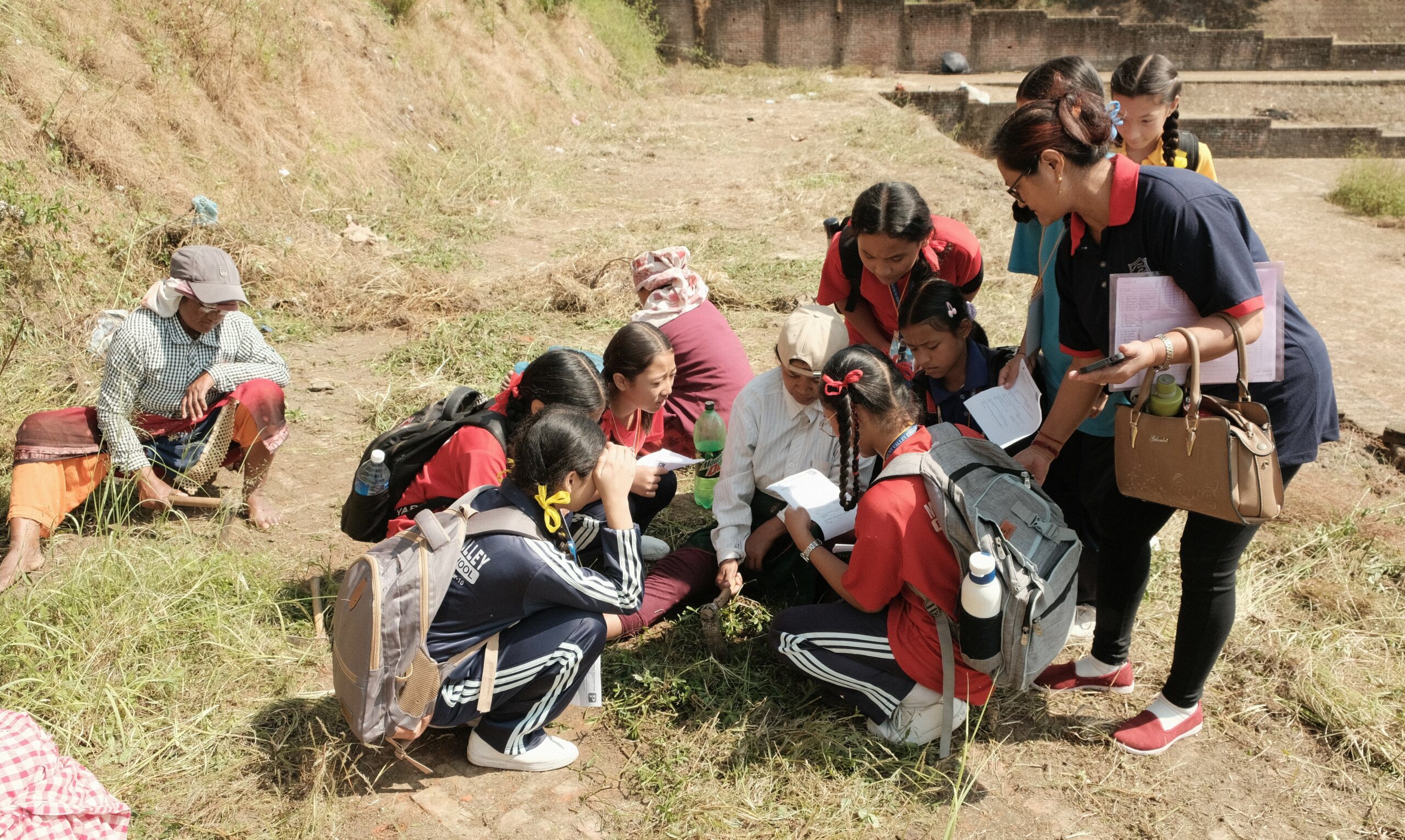
This initiative is believed to foster curiosity and concern about traditional water resources among future generations, communities, and stakeholders. This campaign has bridged between researchers, cultural activists, experts, and students for future collaboration to preserve and promote the astounding water heritage of Bhaktapur City. Moreover, it was fascinating to observe the students’ enthusiasm to interact with communities and experts, undoubtedly bolstering their teamwork practices, creative thinking capacity, and participation in interactive activities. Most importantly, it provided them with valuable insight into the hiti system and its management practices.
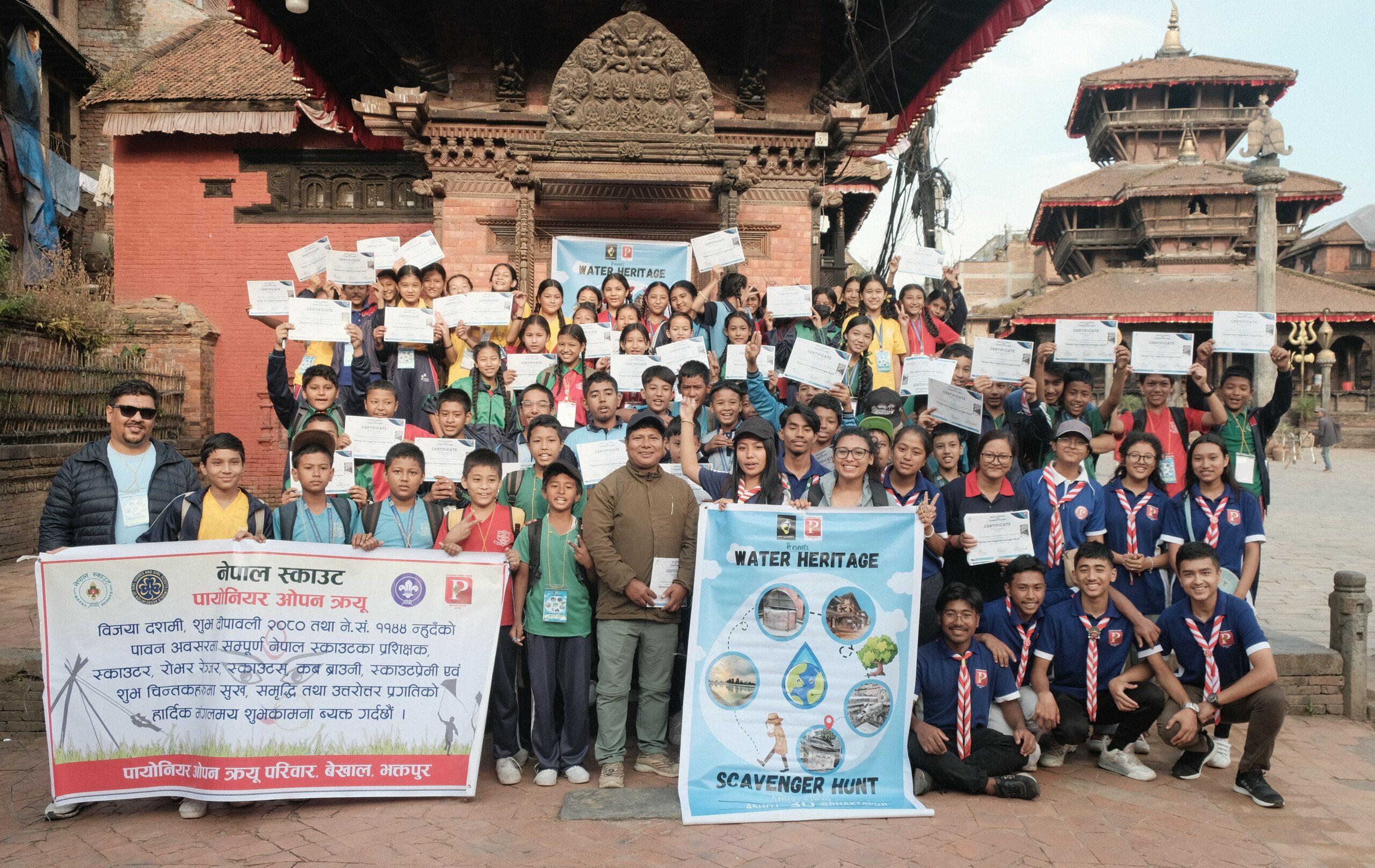
S4W-Nepal is thankful to Walk to Connect for the collaborative opportunity in this impactful awareness campaign. Additionally, S4W-Nepal would also like to acknowledge Nepal Scout Pioneer Open Crew, Temple and Statue Directory, #365daysofexploringbhaktapur, Bhaktapur.com, and Bhaktapur Tourism Development Committee for their support in making this campaign possible. Moreover, special thanks to the resource persons Mr. Om Prasad Daubhadel and Mr. Ram Sundar Bhele for their contribution and insightful sharing of the water heritage in Bhaktapur.
Reference
Joshi, J. (2015) Preserving the Hiti, Ancient Water Spout System of Nepal. In: Australia ICOMOC Conference, November 2015. Adelaide: ICOMOS Australia.n: Demos.
Water Heritage Scavenger Hunt – Know Your City Read More »

